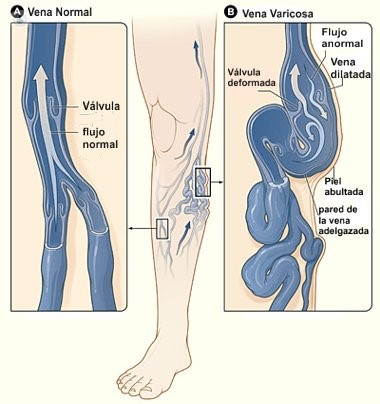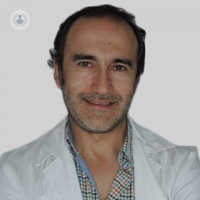Tres tipos de tratamiento de las varices
Written by:Varicose veins are responsible, in large part, for making the blood return to the heart again, but when the valves of the superficial system of the lower limbs are damaged, varicose veins appear.. As explained to us by Dr. Cachaldora del Río, Vascular Surgeon at the Abaton Medical Center in A Coruña.
Our venous system has the mission to make the blood return to the heart from the different tissues to be oxygenated again. This function is exercised to a great extent thanks to the valves that exist in the veins to avoid the effect of gravity. When the valves of the superficial system of the lower limbs (the one that is immediately under the skin) are damaged, some venous sectors dilate and varicose veins appear. Not only is its aesthetic component but the consequences of the abnormal accumulation of blood in the legs which makes vascular surgeons advise their assessment. There are several treatments and almost all try to eliminate them, to exclude them in some way, so that the blood returns through the healthy veins inside the limb.
1-Treatment of varicose veins by surgery
Is the classical, but highly developed and improved by incorporation of labeling doppler ultrasound method; This facilitates the identification of the sectors that we are most interested in eliminating or which is the origin point of the problem to affect it directly. The number of incisions is also limited significantly. The diseased veins are removed without consequences because in reality they no longer correctly fulfilled their function, the blood will return through other healthy veins. It usually requires spinal anesthesia and a very short hospital stay. Leaves small incisions of minimal aesthetic impact on the limb. It is, perhaps, the most universally accepted and most experienced method among vascular surgeons. Well done avoids many recurrences (appearance of new varicose veins).
2-Treatment of varicose veins by radiofrequency
In this case to try to eliminate the dilated veins we resort to the physical effect of heat. A simple puncture or a minimal incision is used to insert a catheter through the vein that we are interested in eliminating and whose tip has the capacity to heat up to 120ºC, which causes the vein to burn inside and stop circulating blood through it . that eliminates its consequences.
Protect the surrounding tissues from that source of heat by injecting around the vein with anesthetic serum. The result is very good, although if the venous sector is very branched we will have to resort to small additional incisions and surgical extraction of these branches. It can be done with slight sedation. Does not require hospitalization or at most a few hours in a short stay unit and the aesthetic result is, in the cases that it is indicated, very good.

3-Treatment of varicose veins using foam sclerotherapy
Here we use the chemical effect of a very irritating substance for the "target" vein that causes it to suffer inflammation, coagulation of the blood inside, and subsequent disappearance by resorption .
To increase the contact of the substance with the venous wall, the injection of the sclerosant is done by mixing it with air and turning it into a foam that stays longer inside the vein and therefore increases its effect. The vein thromboses and disappears with time. It is a technique that does not require anesthesia because the punctures are made with very low profile needles that produce minimal discomfort. Initially it arose for varicose veins and spider veins (varicose veins of low or very low caliber), although some tendencies suggest that its operation is also good in varicose veins of more entity.


